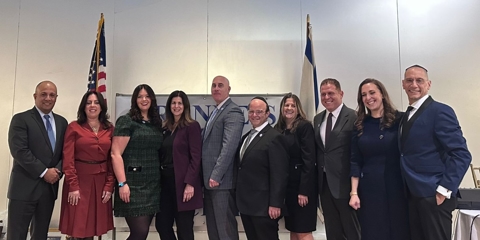Beginning February 22, 2026, New York City’s Earned Safe and Sick Time Law (ESSTA) will expand to permit new reasons for use and require new additional unpaid leave.
The new bill expanding ESSTA, enacted in October 2025, also increases the collective bargaining power of workers, as well workers’ right to make temporary changes to their work schedule for certain personal events (under the separate Temporary Schedule Change Law).
THE ESSTA
The current law provides covered NYC employees with qualifying reasons to use safe and sick leave for the care and treatment of themselves or a family member.
Employees can use the paid leave time in case of an illness, injury, or other health condition, including getting a diagnosis or receiving treatment, care, or preventive care.
Employees can also use their paid leave time to care for a minor child, care recipient, or other dependent in case of an illness, injury, or other health condition.
The ESSTA benefits allow employees to also use their time “to seek legal and social services assistance or take other safety measures” in certain instances related to subsistence benefits or housing for the employee, their covered family member, or their care recipient.
It likewise includes cases where “the employee or a family member may be the victim of any act or threat of domestic violence or unwanted sexual contact, stalking, or human trafficking.”
Of note, this now also includes workplace violence, defined as “any act or threat of violence against an employee that occurs in a place of employment.”
WHAT HAS CHANGED
Employees can now also use their paid leave time in case of a public disaster—previously only if their place of business was closed by order of a public official—defined as “events such as a fire, explosion, terrorist attack, severe weather conditions, or other catastrophe that is declared a public emergency or disaster by the U.S. President, New York Governor, or New York City Mayor.”
This includes cases in which a public official directs people to remain indoors or avoid travel during a public disaster, resulting in the employee being unable to report to their worksite.
Similarly, it includes caring for a child whose school or care provider has restricted in-person operations or closed due to a public disaster or health emergency.
Significantly, the ESSTA amendment requires all employers, regardless of size or net income, to provide employees with an additional 32 hours of unpaid leave, beyond the leave previously available to them under ESSTA.
This unpaid leave is available for immediate use upon hire and the start of each calendar year, and can be used for any of the covered reasons listed above.
Unused unpaid safe and sick time does not carry over into the following year.
Employers must utilize paid safe and sick time before unpaid safe and sick time for an employee, to the extent the paid benefit is available and the employee has not specifically requested to use their unpaid balance.
EMPLOYER RESPONSIBILITIES
- Employers with 100 or more employees must provide up to 56 hours of paid safe and sick leave each calendar year.
- Employers with 5 to 99 employees must provide up to 40 hours of paid safe and sick leave each calendar year.
- Employers with four or fewer employees and a net income of $1 million or more must provide up to 40 hours of paid safe and sick leave each calendar year.
- Employers with four or fewer employees and a net income of less than $1 million must provide up to 40 hours of unpaid safe and sick leave each calendar year.
- Employers with 1 or more domestic workers must provide up to 40 hours of paid safe and sick leave each calendar year; employers with 100 or more domestic workers must provide up to 56 hours of paid safe and sick leave each calendar year.
- Regardless of employer size or net income, all employers must provide up to 32 hours of unpaid leave, in adidtion to any paid leave to which the employee may be entitled.
- Regardless of employer size or net income, all employers must provide a separate bank of 20 hours of paid prenatal leave per 52-week period in addition to up to 40 or 56 hours of accrued safe and sick leave each calendar year.
- Employers must allow employees to use safe and sick leave as it is accrued, with no waiting period for new hires.
- Employees can use leave for unexpected reasons without giving advance notice.
- Employers must provide employees with a written safe and sick leave and paid prenatal leave policy that describes the benefits and how to use them.
- Employers can require documentation only when employees use more than three workdays in a row of leave, if the documentation requirement is explained in the employer’s written policy.
- Employers must inform employees of their accrued, used, and total safe and sick leave balances on a paystub or through an employee-accessible electronic system. Paid prenatal leave use and balance information may be provided in separate documentation.
Employers should review their existing sick leave and PTO policies to ensure they align with the new requirements listed above.
For a full list of expanded employee benefits under, visit DCWP’s ESSTA page, or contact us.
As always, we will keep you updated regarding any changes to the law.



